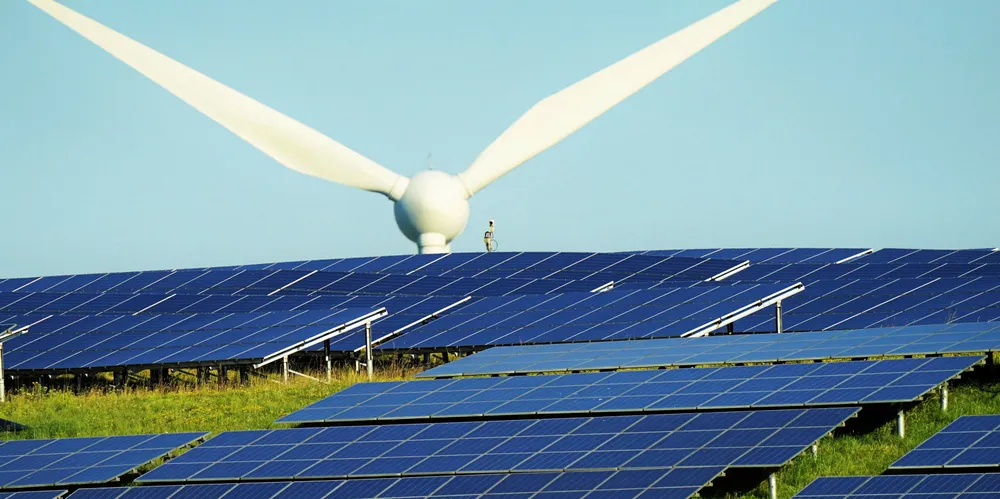Renewables industry fears investor uncertainty over 'patchwork' EU revenue cap
Sector players reject lower levels in different member states, demand more action on permitting and call for exemptions for sources such as geothermal

A patchwork of national price caps, high uncertainty for investors and measures only addressing the symptoms and not the cause of the current energy crisis were among the possible impacts of a cap on renewable power revenues proposed by the European Commission, major industry players warned.
SolarPower Europe said it welcomed the commission putting forward common European measures to address the energy crisis, adding it understands that the revenue cap at €180 ($179.77) per megawatt hour will not apply to PV installations not earning extra profits in wholesale power markets, such as those receiving fixed feed-in tariffs (FITs), contracts for difference (CfDs), or having power purchase agreements (PPAs) in place.
“However, we greatly regret the possibility that is preserved for member states to set a lower cap on revenues at national level,” said Naomi Chevillard, head of regulatory affairs at SolarPower Europe.
“This creates high uncertainty for investors and endangers the integrity and unity of the EU market. The European Commission should set a European-wide base-level of proportionality for the new cap measures.”
‘Investors need visibility’
WindEurope voiced similar misgivings, saying that national caps that deviate from an EU-wide cap would create a patchwork undermining investment in renewables.
“The EU wants a huge expansion of renewables to help get out of the current energy crisis. That means loads of new investments in wind and solar," WindEurope chief executive Giles Dickson said.
"But investors need visibility. So an EU-wide cap on revenues from wind should be precisely that – a single EU-wide cap.
"Allowing countries to deviate from it and have lower caps creates confusion and certainty - and will slow down the investments we so badly need.”
Vestas CEO for addressing ‘underlying cause’
To make the energy system resilient to external shocks posed by the volatility of fossil fuel prices, governments need to make sure their measures to speed up the expansion of renewables really work, he said.
Vestas CEO Andersen
“While ambitions to accelerate renewable installed capacity were stepped up earlier this year in response to the burgeoning energy crisis, at present, the EU has approximately four times more wind capacity in permitting than under construction,” Andersen said, adding that the much needed grid build-out is even slower.
The CEO also pointed out that new drilling licenses for oil & gas in the North Sea or boosting LNG imports to replace Russian gas have been “hailed as a quick solution” while they won’t break the “vicious cycle of fossil-fuel volatility”.
Exemptions for bioenergy and geothermal?
Germany’s renewables federation BEE as well as “unleashing” the expansion of wind and solar also demanded the use other renewable technologies as a back-up, and the granting to them of exemptions.
“A flexible, decentralised back-up of bioenergy, hydropower, geothermal energy, storage and green hydrogen must be developed and built up,” BEE President Simone Peter said.
“To do this, all of these technologies need freedom of investment, which must not be restricted by a revenue cap.”
Biogas can be used to replace fossil gas, and geothermal energy (already being rapidly expanded in Munich, Germany’s third-largest city) can both deliver electricity and heating.
Electricity market design reform?
European Commission President Ursula von der Leyen in her State of the European Union speech yesterday (Wednesday) also said the commission as a more long-term measure plans a deep and comprehensive reform of the electricity market.
Politicians in several countries are increasingly dissatisfied with the merit-order principle reigning power markets in the EU, which determines that the most expensive power source – currently fossil gas – sets the wholesale power price.
The BEE in a recent study on the electricity market design has suggested to create a power market exclusively for renewables to de-link them from market distortions.
“Changes to electricity market design or profit caps should be approached with caution,” Vestas’s Andersen warned, however.
“We have to avoid triggering market distortions that dampen investor appetite for renewable energy in the long run.”
(Copyright)